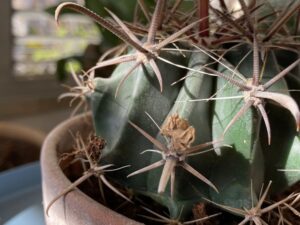In the realm of culinary exploration, the cactus stands out as an unusual yet intriguing option. Many may wonder, “Can you eat cactus?” The answer is a definitive yes, but the nuances of edible cacti range from species identification to preparation techniques. This guide dives deep into the fascinating world of cacti, unveiling its edible parts and offering insight into why these plants have captivated human interest for centuries.
As one gazes upon the diverse species of cacti, it is easy to be drawn to their unique forms and resilient nature. These desert plants symbolize survival and adaptability. Yet, as people venture into the kitchen, they often overlook the delectable possibilities hidden beneath the spines. For those curious about the culinary potential of cacti, understanding the particulars of which varieties are safe to eat, how to prepare them, and their nutritional benefits is essential.
From the prickly pear to the nopal, the edible cactus varieties offer a delightful range of flavors and textures. Each part of the cactus can be utilized in unique ways, which speaks volumes about human ingenuity in food sourcing. This guide will elucidate the edible aspects of cacti, methods of preparation, and their nutritional profiles.
Culinary Uses of Edible Cacti
While the visual impact of cacti is undeniable, their culinary potential might surprise many. The most well-known edible varieties include prickly pears and nopal, both of which offer distinct flavors and textures. Prickly pear, or Opuntia, is particularly celebrated for its sweet, juicy fruit, often used in beverages and desserts.
On the other hand, nopal refers to the young pads or leaves of the Opuntia species, which are harvested while still tender. Their mild flavor and slightly gummy texture make them versatile. Nopales can be grilled, sautéed, or added to salads, showcasing their culinary adaptability.
For those adventurous in the kitchen, even the flowers and seeds of certain cacti can be utilized. The blossoms of the prickly pear are not only beautiful but edible as well. They can be candied or used to enhance the visual appeal of a dish. Likewise, the seeds can be ground into flour or included in baked goods for added nutrients and crunch.
Identifying Edible Cactus Species
Understanding which cacti are safe for consumption is critical for any aspiring culinary explorer. It is crucial to identify edible species accurately, as some cacti can produce toxic compounds. The Opuntia genus encompasses numerous edible varieties, notable for their fruit and pads. The prickly pear and nopal pads are the most commonly enjoyed.
Other lesser-known yet edible species include the saguaro (Carnegiea gigantea) and the cholla (Cylindropuntia), which produce edible buds and fruits. Each of these cacti offers a distinct flavor profile and texture, contributing to their uniqueness in the culinary landscape.
However, it is advisable to source cacti from reputable suppliers or markets that specialize in edible plants. Wild-harvested cacti may present unknown risks, particularly if the species is incorrectly identified. It is also wise to ensure the plants have not been treated with pesticides or other harmful chemicals.
Cactus Preparation Techniques
Once the cactus has been identified and sourced, preparation is the next step. Handling cactus can be tricky due to their spines, or glochids, which can easily irritate the skin. It is advisable to wear gloves while prepping, especially when working with prickly pears and nopales. For prickly pears, the fruit should be washed, and the spines carefully removed. A sharp knife can slice off both ends before scoring the outer skin and peeling it away, revealing the vibrant, edible flesh inside.
Nopales preparation involves trimming away the spines and cutting the pads into smaller pieces. They can be sautéed, grilled, or boiled, a process that helps soften their texture. Cooking also diminishes the sliminess that is often associated with their raw state. Nopales are not only delicious when cooked but also pack a nutritional punch, being rich in fiber, vitamins, and antioxidants.
Incorporating cactus into meals can be simple yet rewarding. Cubed nopales can be tossed into salads, added to scrambled eggs, or fashioned into salsas alongside tomatoes and onions. Prickly pear juice can be fermented for a refreshing beverage or transformed into jellies and syrups for a unique sweetness in desserts.
Nutritional Benefits of Cactus
The nutritional profile of edible cacti warrants attention. Rich in vitamins C and A, they support immune function and overall health. Additionally, cacti are excellent sources of dietary fiber, promoting digestive health. Their water content helps keep the body hydrated, making cacti particularly beneficial in arid regions where they flourish.
Moreover, recent studies suggest that certain compounds found in cacti may possess anti-inflammatory and antioxidant properties. This intrigue fosters further scientific exploration into their health benefits, adding to the allure of consuming these remarkable plants.
In conclusion, the captivating world of edible cacti offers a remarkable blend of culinary adventure and nutritional value. With a diverse range of flavors and textures, these plants invite exploration in various dishes. Understanding their preparation techniques and nutritional benefits enhances not only the culinary experience but also deepens the appreciation for their role in human culture and sustenance. So, whether you choose to savor the sweetness of a prickly pear or enjoy the unique texture of nopales, the world of cactus consumption is as rich and rewarding as the desert landscapes from which they hail.




Leave a Comment